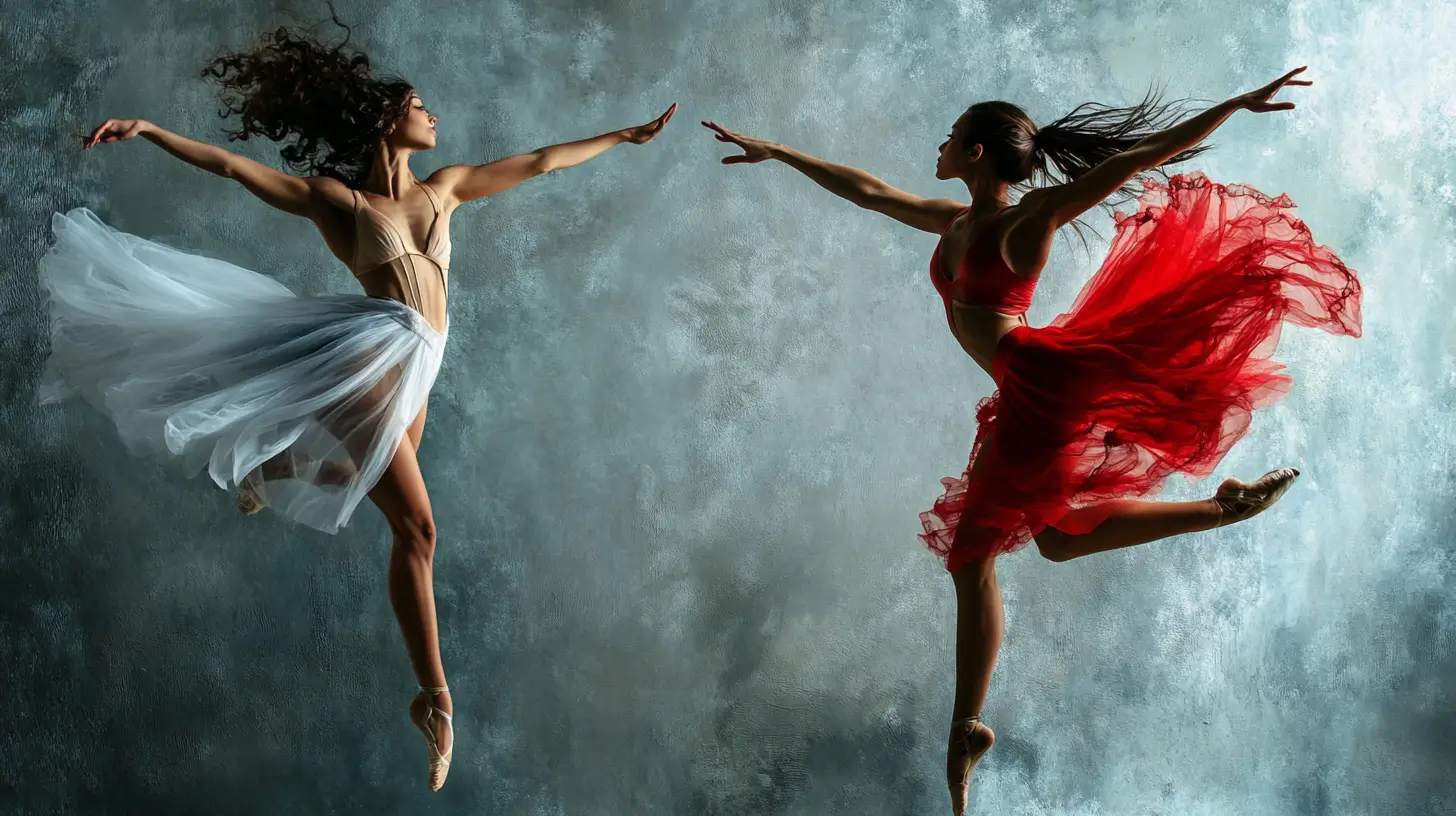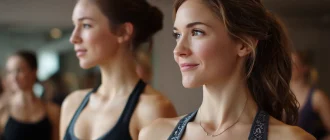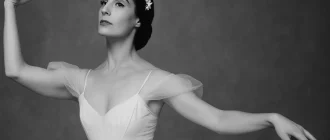Ballet and contemporary dance are distinct forms of artistic expression, each with unique origins, techniques, and philosophies. Ballet is known for its formalized movements, precision, and historical roots in the courts of France and Italy.
The debate between classical ballet and contemporary ballet highlights the evolution of dance styles, contrasting the traditional portrayal of classical ballet with classical music with the modern themes and fluidity of contemporary ballet.
Conversely, contemporary dance emerged in the late 20th century, embracing emotional expression and innovation through a combination of classical and modern dance styles. This article examines the key differences between ballet and contemporary dance, from their storytelling techniques to their training methods, offering a comprehensive comparison for dance enthusiasts.
Graceful Insights
- Classical ballet is characterized by its structured techniques, elaborate storytelling, and traditional aesthetics, while contemporary dance emphasizes emotional expression, adaptability, and a diverse range of movement styles.
- Classical ballet training is systematic and rigorous, focusing on precision and technique, whereas contemporary dance training promotes individual creativity and a blend of various influences.
- Contemporary dance is gaining popularity due to its accessibility and emotional depth, which allows it to resonate with modern audiences and encourage a broad spectrum of artistic expression.
Art de Podcast
| Category | Ballet | Contemporary |
|---|---|---|
| Origin | Classical European courts, primarily France and Italy, in the 15th century. | Modern and postmodern dance movements influenced the early 20th century. |
| Dance Style | Formal, structured, with precise movements and technique. | More fluid, expressive, and less structured, emphasizing individual expression. |
| Body Alignment | Upright posture, emphasizing verticality and turnout (external rotation of legs). | Use of natural body movement, including grounded positions and curves. |
| Choreography Focus | Emphasis on grace, symmetry, and balance. Movements are often predetermined. | Emphasis on experimentation, improvisation, and abstract movements. |
| Music | Classical music, often orchestral (e.g., Tchaikovsky, Prokofiev). | Varied, including classical, modern, experimental music, or even silence. |
| Technique | Requires specific techniques, such as pliés, relevés, pirouettes, and pointe work. | It draws from ballet, modern dance, and improvisational techniques, allowing more freedom of movement. |
| Footwear | Pointe shoes (for females) or ballet slippers. | They often danced barefoot or with minimal footwear. |
| Movement Characteristics | Light, airy, and controlled with emphasis on long, extended lines. | It is more grounded and dynamic, using the floor and a wider range of motions. |
| Emotional Expression | Focus on elegance and portraying characters or stories through mime and set choreography. | Focus on personal or abstract expression, often highlighting emotional intensity. |
| Performance Settings | Traditionally performed in theaters, with formal staging and elaborate costumes. | It can be performed in various settings, including non-traditional venues like outdoor spaces and with simpler costumes. |
| Famous Dancers/Choreographers | Mikhail Baryshnikov, Anna Pavlova, and George Balanchine. | Martha Graham, Merce Cunningham, Pina Bausch. |
| Physical Requirements | High strength, flexibility, and balance emphasize foot and leg strength. | It requires strength and flexibility, but allows for more individual variation in body types. |
| Popularity & Accessibility | It is seen as a more formal, traditional art form, often associated with elite training. | It is more accessible and relatable to modern audiences due to its flexibility and experimentation. |
Understanding Classical Ballet and Contemporary Dance

Classical ballet originated in the court dances of France and Italy during the Renaissance and was initially performed by aristocrats. It is known for its formalized movements and dancing techniques, which reflect the grandeur, style, and sophistication of European royal courts.
Neoclassical ballet dancers undergo intense training to master precise dancing techniques. They often perform classical music in elaborate costumes that enhance the visual splendor of their art.
In contrast, contemporary dance blossomed in the late 20th century as a response to the rigid structure of classical ballet. Influenced by various dance styles and the changing social landscape, it was created by everyday, working-class people, unlike classical dance, which had aristocratic origins.
Contemporary dance emphasizes emotional expression and personal freedom, allowing dancers to explore a range of movements and styles. It often incorporates elements from jazz, modern dance, and even modern hip-hop, resulting in a dynamic and fluid art form that encourages innovation and individuality.
Key Differences Between Ballet and Contemporary Dance
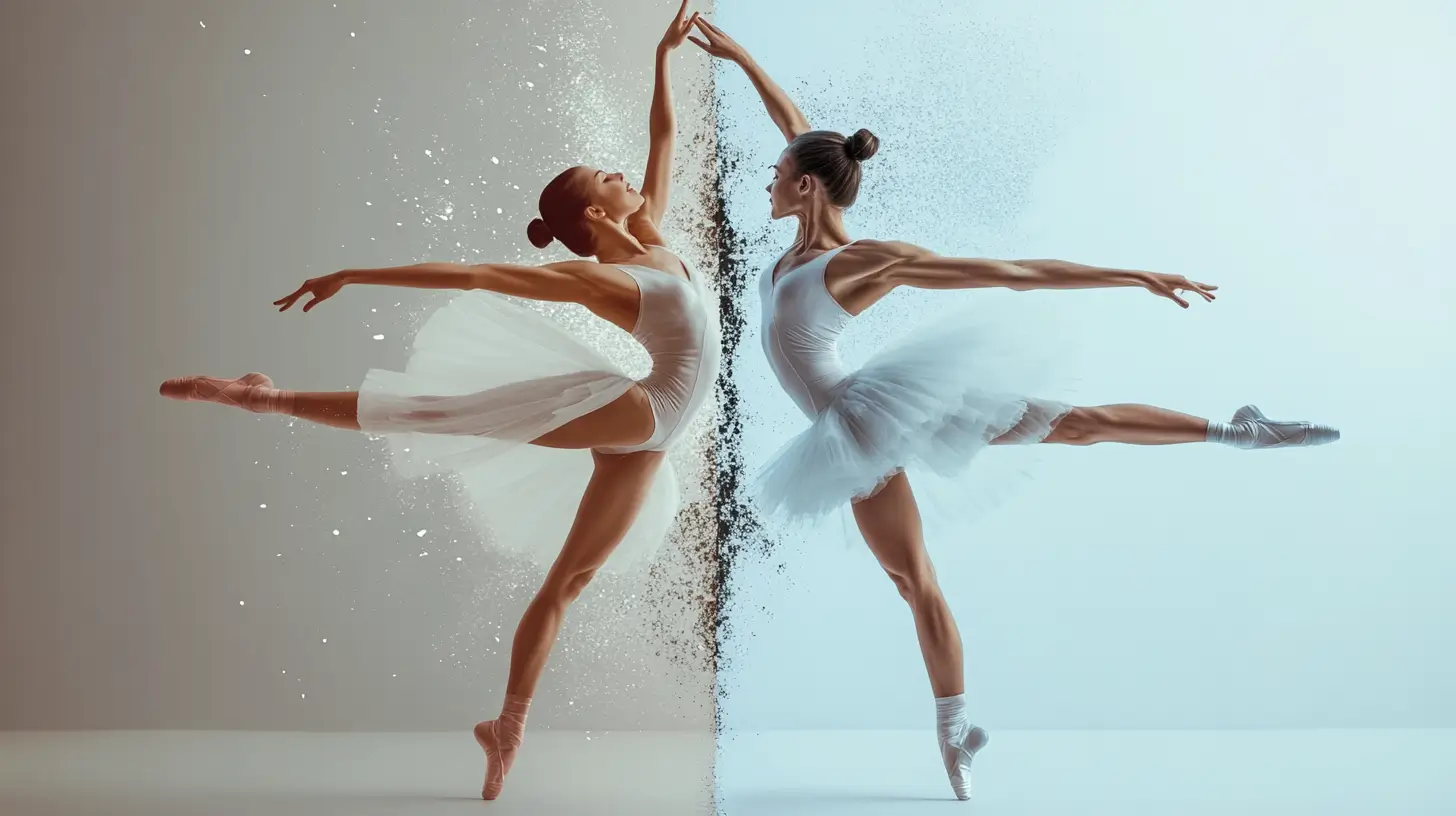
While ballet and contemporary dance aim for artistic expression, their approaches differ significantly. Ballet focuses on structured techniques and precise movements, adhering strictly to classical dance forms and traditions. On the other hand, contemporary dance prioritizes adaptability, emotional expression, and personal innovation over classical ballet techniques. It often incorporates improvisation and blends various styles.
These differences allow a deeper exploration of how each form approaches storytelling, aesthetics, music, and movement techniques.
Storytelling in Ballet vs. Abstract Themes in Contemporary Dance
Classical ballet, performed by classically trained dancers, is renowned for its structured storytelling. It weaves dramatic narratives through intricate choreography and emotive expression. Iconic performances like Swan Lake and Giselle captivate audiences with their tales of love, betrayal, and redemption conveyed through precise and graceful movements.
This hallmark aspect of classical ballet ensures every gesture and step is meticulously crafted to advance the plot and evoke specific emotions.
Conversely, contemporary dance often eschews traditional storytelling in favor of abstract themes and emotions. Choreographers use movement to explore complex ideas and personal narratives, allowing for open-ended interpretation. This approach creates a deeply engaging and thought-provoking experience as viewers connect with the raw emotional energy and innovative movements of contemporary dance.
Costumes and Scenery: Traditional vs. Modern
The visual aesthetics of ballet and contemporary dance further highlight their differences. Ballet costumes are often elaborate and historically inspired, reflecting the traditional aspects of this classical art form. Tutu-clad ballerinas and princely dancers grace the stage in productions like “The Nutcracker” and “Sleeping Beauty,” with detailed costumes and opulent sets transporting audiences to fantastical realms.
In contrast, contemporary dance favors a more minimalistic and modern approach to costumes and scenery, often reflecting contemporary styles. Dancers in contemporary work usually perform in simple, flexible attire that allows unrestricted movement and emphasizes the purity of their physical expressions.
Sets are typically sparse or abstract, focusing on creating an emotional or conceptual atmosphere rather than a detailed visual backdrop. This stark contrast underscores the unique styles and philosophies behind each dance form.
Footwear and Movement Techniques
Footwear is crucial in defining movement techniques, unique ballet styles, and other contemporary dance forms. Ballet dancers wear pointe shoes, enabling them to perform with remarkable precision and elevation. The hard-tipped pointe shoes allow dancers to execute delicate movements and seemingly defy gravity, embodying the ethereal quality of classical ballet.
Conversely, contemporary dancers often perform barefoot, allowing for a greater range of motion and a more grounded connection between their bare feet and the floor. This approach fosters fluidity and emphasizes natural body movements, incorporating techniques like rolling, sliding, and crawling, many forms that are atypical in classical ballet.
Performing barefoot enables modern and contemporary dancers to explore various movements and express a more organic, emotional depth through their performances.
The Evolution of Contemporary Ballet

Contemporary ballet emerged in the 1980s as a fascinating fusion of classical and modern dance techniques. Innovators like choreographer George Balanchine played a pivotal role, introducing elements such as flexed hands and non-traditional costumes that challenged classical ballet conventions.
Balanchine’s work paved the way for a new genre that retained ballet’s technical rigor while embracing the expressive freedom of contemporary dance.
Other key figures, such as William Forsythe and Twyla Tharp, further pushed the boundaries of traditional ballet. Forsythe’s innovative choreography and Tharp’s blend of modern dance movements with classical ballet techniques have significantly contributed to the development of contemporary ballet.
This genre continues to evolve, incorporating diverse influences and exploring new forms of artistic expression, making it a dynamic and ever-changing art form.
Characteristics of Contemporary Dance
Contemporary dance is characterized by its flexibility, emotional expression, and choreographers’ willingness to experiment with different movement styles. Unlike the structured techniques of classical ballet, modern and contemporary dance embrace a wide range of influences, from jazz to modern hip-hop steps, creating a fluid and versatile art form.
This adaptability allows dancers to convey complex emotions and personal narratives, making each performance unique and engaging.
Use of Floor Work in Contemporary Dance
Floorwork is a pivotal aspect of modern and contemporary dance. It emphasizes grounded, fluid movements that sharply contrast with Allet’s vertical orientation. Dancers frequently utilize the floor for rolls, slides, and other techniques that enhance expressiveness and fluidity.
This approach allows for a broader range of different styles of stage movement and a more intimate connection with the performance space.
Upper Body Movements in Contemporary Dance
Upper body movements in contemporary dance are notably more expressive and fluid than those in classical ballet. Dancers use contractions, releases, and organic motions to convey emotional depth and connection, a style contrasting with the rigid postures and alignment required in ballet.
This emphasis on upper-body expressiveness allows jazz and contemporary female dancers to communicate various feelings and ideas through movement and music.
Why Contemporary Dance is Gaining Popularity
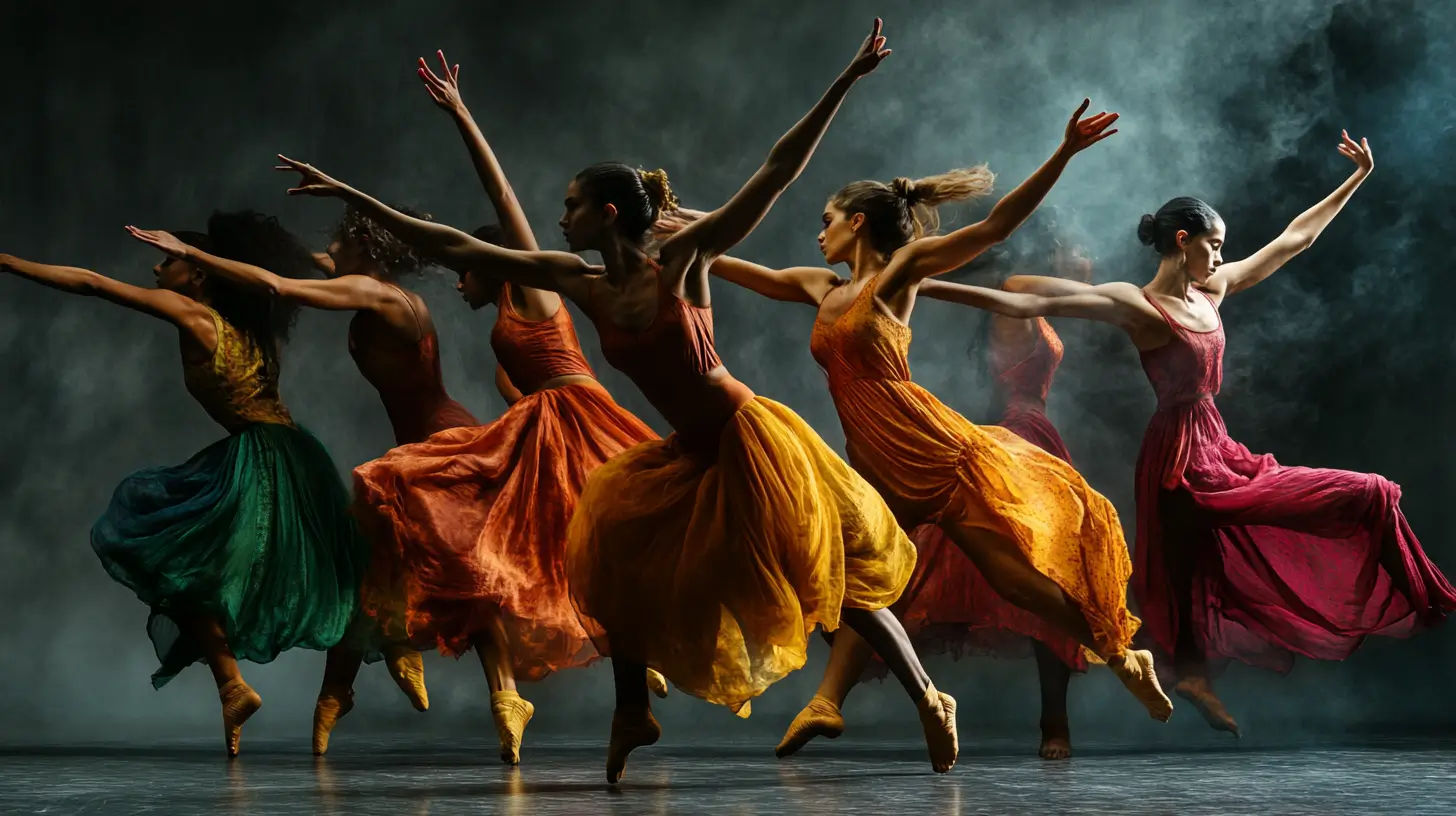
Contemporary dance’s rising popularity can be attributed to its accessibility and freedom of movement, which resonate with modern audiences. Unlike classical ballet, which uses highly structured and demanding techniques, contemporary dance offers a more inclusive and adaptable approach to artistic expression. This flexibility allows dancers from diverse backgrounds to bring their unique styles and narratives to the stage, creating a rich tapestry of performances that appeal to a broad audience.
Moreover, contemporary dance’s emphasis on personal and emotional expression makes it a powerful medium for exploring current social and cultural themes. As choreographers continue to innovate and push the boundaries of what dance can convey, contemporary dance remains a dynamic and evolving art form that captures the imagination of audiences worldwide.
This blend of accessibility, innovation, and emotional depth explains why contemporary dance continues to gain traction and admiration.
Comparing Training and Techniques
Ballet and contemporary dance training differ significantly, reflecting the distinct philosophies and techniques of each form. Ballet training is highly structured and emphasizes precision, flexibility, and strength through a systematic progression of exercises and routines.
Conversely, contemporary dance training emphasizes versatility, improvisation, and individual expression, allowing dancers to explore various styles and techniques. These differences in training highlight the unique challenges and rewards of mastering each dance form.
Ballet Training Techniques
Ballet training is deeply rooted in traditional classical technique. It focuses on technical mastery and precision through a structured exercise regimen. Historical figures like Marius Petipa, a choreographer who created over 50 ballets, including “The Nutcracker Suite” and “Raymonda,” laid the foundation for classical ballet training and performance.
Ballet dancers spend years perfecting their technique, starting with basic exercises at the barre and gradually progressing to more complex movements en pointe.
This rigorous training develops the dancer’s physical strength and flexibility and instills a deep understanding of the classical techniques that define ballet. Dancers learn to execute movements precisely, maintaining strict alignment and control. This disciplined approach is essential for mastering the demanding choreography and technical challenges of classical ballet.
Contemporary Dance Training Methods
Contemporary dance training, on the other hand, emphasizes flexibility, fluidity, and personal expression. Techniques like Release and Contact Improvisation promote a relaxed approach to body dynamics, allowing dancers to explore a variety of movements and styles. Strengthening the upper body is crucial for executing complex choreography and lifts, enabling dancers to perform with power and grace.
Beyond physical training, contemporary dance encourages individual creativity and innovation. Dancers often experiment with different techniques and styles, blending elements from ballet, modern dance, hip-hop, and other genres to create their unique artistic expression. This emphasis on versatility and personal exploration makes contemporary dance an ever-evolving and dynamic art form.
Famous Performances and Choreographers

Both ballet and contemporary dance boast a rich history of iconic performances and influential choreographers. These artists and their works have shaped the evolution of each dance form, leaving a lasting impact on the dance world.
From the timeless classics of classical ballet to the innovative creations of modern and contemporary dance choreographers, these performances and artists continue to inspire and captivate audiences globally.
Iconic Ballet Performances
Classical ballet is celebrated for its association with classical music and its repertoire of iconic performances that have become benchmarks in the art form. “Swan Lake,” composed by Tchaikovsky, is one of the most renowned ballets worldwide, although it initially failed at its premiere.
The tale of the enchanted swan princess Odette and her tragic romance has captivated audiences for generations, showcasing the dramatic storytelling and technical precision that define classical ballet.
Another beloved classic is the ballet “The Nutcracker,” a holiday favorite that tells the enchanting story of a young girl named Clara and her magical Christmas Eve journey. With its vibrant characters, dancing, and memorable music, this ballet has become a staple of the festive season, drawing audiences of all ages to its performances.
Similarly, Giselle, which premiered in 1842, is celebrated for its themes of love and betrayal. It became a cornerstone of ballet repertoires worldwide. These iconic performances inspire dancers and audiences with timeless appeal and artistic excellence.
Influential Contemporary Choreographers
In contemporary dance, several pioneering choreographers have significantly influenced the art form, pushing its boundaries and expanding its expressive potential. Martha Graham, a dancer often referred to as the mother of modern dance, introduced techniques that emphasized emotional storytelling and utilized the body as an expressive instrument.
Her work laid the foundation for contemporary dance, inspiring generations of dancers and choreographers to explore deeper emotional and psychological themes.
Merce Cunningham and Paul Taylor further revolutionized contemporary dance with their innovative approaches to ballet technique. Cunningham’s emphasis on chance operations and the spatial relationship of movement broke new ground in choreographic practice.
Meanwhile, Paul Taylor’s eclectic style, which fused various dance forms and themes, contributed significantly to the diversity and richness of contemporary dance. Contemporary choreographers like William Forsythe and Ohad Naharin continue to challenge traditional norms, introducing unique movement vocabularies and exploring interdisciplinary collaborations that keep the art form vibrant and relevant.
Resume
Though distinct in their approaches and techniques, ballet and contemporary dance offer profound and captivating experiences. Classical ballet, with its structured precision and rich storytelling, continues to enchant audiences with its timeless beauty and technical mastery. Conversely, contemporary dance thrives on its flexibility, emotional depth, and innovative spirit, appealing to modern sensibilities and expanding the horizons of artistic expression.
As we have seen, each dance form brings unique strengths and challenges, contributing to the diverse and dynamic world of dance. Whether through the ethereal elegance of ballet or the expressive freedom of contemporary dance, both dance forms celebrate the human spirit and the boundless possibilities of movement. Embracing classical traditions and modern innovations, the dance world continues to evolve, inspiring new generations of dancers and audiences.

